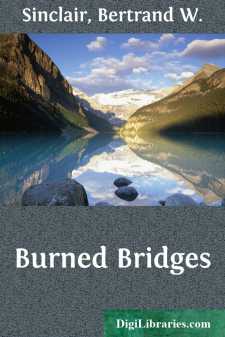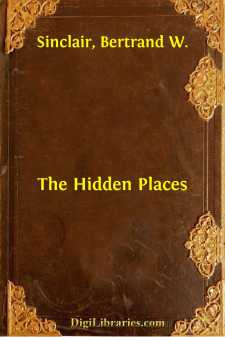Categories
- Antiques & Collectibles 13
- Architecture 36
- Art 48
- Bibles 22
- Biography & Autobiography 813
- Body, Mind & Spirit 142
- Business & Economics 28
- Children's Books 15
- Children's Fiction 12
- Computers 4
- Cooking 94
- Crafts & Hobbies 4
- Drama 346
- Education 46
- Family & Relationships 57
- Fiction 11828
- Games 19
- Gardening 17
- Health & Fitness 34
- History 1377
- House & Home 1
- Humor 147
- Juvenile Fiction 1873
- Juvenile Nonfiction 202
- Language Arts & Disciplines 88
- Law 16
- Literary Collections 686
- Literary Criticism 179
- Mathematics 13
- Medical 41
- Music 40
- Nature 179
- Non-Classifiable 1768
- Performing Arts 7
- Periodicals 1453
- Philosophy 64
- Photography 2
- Poetry 896
- Political Science 203
- Psychology 42
- Reference 154
- Religion 513
- Science 126
- Self-Help 84
- Social Science 81
- Sports & Recreation 34
- Study Aids 3
- Technology & Engineering 59
- Transportation 23
- Travel 463
- True Crime 29
Burned Bridges
Description:
Excerpt
CHAPTER I
THE FIRST PROBLEM
Lone Moose snaked its way through levels of woodland and open stretches of meadow, looping sinuously as a sluggish python—a python that rested its mouth upon the shore of Lake Athabasca while its tail was lost in a great area of spruce forest and poplar groves, of reedy sloughs and hushed lakes far northward.
The waterways of the North are its highways. There are no others. No wheeled vehicles traverse that silent region which lies just over the fringe of the prairies and the great Canadian wheat belt. The canoe is lord of those watery roads; when a man would diverge therefrom he must carry his goods upon his back. There are paths, to be sure, very faint in places, padded down by the feet of generations of Athabascan tribesmen long before the Ancient and Honorable Company of Adventurers laid the foundation of the first post at Hudson's Bay, long before the Half Moon's prow first cleft those desolate waters. They have been trodden, these dim trails, by Scotch and French and English since that historic event, and by a numerous progeny in whose veins the blood of all three races mingles with that of the native tribes. But these paths lead only from stream to stream and from lake to lake. No man familiar with the North seeks along those faint trails for camp or fur posts or villages. Wherever in that region red men or white set up a permanent abode it must of necessity be on the bank of a stream or the shore of a lake, from whence by canoe and paddle access is gained to the network of water routes that radiate over the fur country.
Lone Moose Creek was, so to speak, a trunk line. The ninety miles of its main channel, its many diverging branches, tapped a region where mink and marten and beaver, fox and wolf and lesser furs were still fairly plentiful. Along Lone Moose a dozen Cree and half-breed families disappeared into the back country during the hazy softness of Indian summer and came gliding down in the spring with their winter's catch, a birch-bark flotilla laden indiscriminately with mongrel dogs and chattering women and children and baled furs and impassive-faced men, bound for Port Pachugan to the annual barter.
Up Lone Moose some twenty-odd miles from the lake the social instinct had drawn a few families, pure-blooded Cree, and Scotch and French half-breeds, to settle in a permanent location. There was a crescent-shaped area of grassy turf fronting upon the eastern bank of Lone Moose, totaling perhaps twenty acres. Its outer edge was ringed with a dense growth of spruce timber. In the fringe of these dusky woods, at various intervals of distance, could be seen the outline of each cabin. They were much of a sort—two or three rooms, log-walled, brush laid upon poles, and sod on top of that for a roof, with fireplaces built partly of mud, partly of rough stones. Folk in such circumstances waste no labor in ornamentation. Each family's abiding place was purely utilitarian. They cultivated no land, and the meadow during the brief season supplied them with a profusion of delicate flowers a southern garden could scarcely excel....




